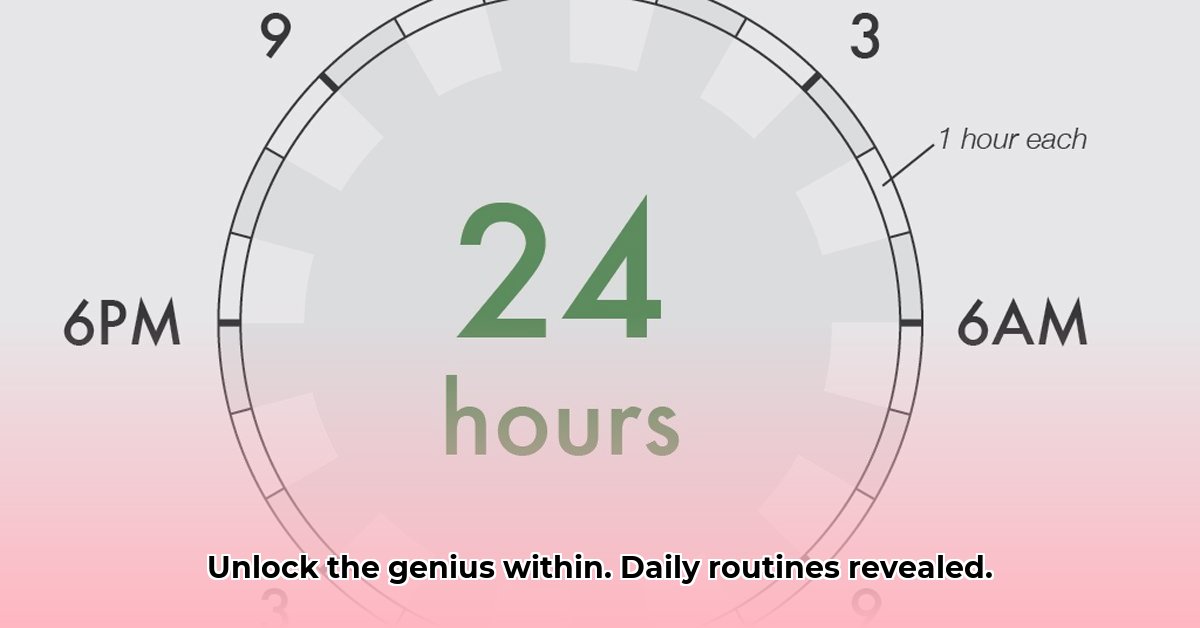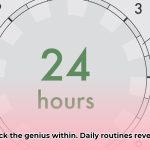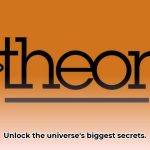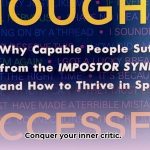Do you want to unlock your full creative potential and achieve peak productivity? Delve into the lives of history’s greatest minds and discover the daily routines and habits that fueled their genius. From Leonardo da Vinci’s artistic process to Marie Curie’s scientific breakthroughs, we’ll explore the surprisingly simple yet powerful strategies they employed to achieve extraordinary feats. This journey isn’t about blindly copying these routines, but rather about understanding the principles behind their success and adapting them to create a personalized system that works for you. Are you ready to unlock your inner genius?
Decoding Genius: Exploring the Daily Habits of Monumental Minds
Have you ever wondered what set history’s most brilliant minds apart? What daily habits fueled their creativity, innovation, and groundbreaking achievements? While innate talent certainly plays a role, the daily routines and habits of these individuals offer invaluable insights into cultivating genius. It’s not about magic; it’s about a fascinating blend of self-discipline, strategic planning, and a deep understanding of one’s own creative process. Let’s explore the routines of some of history’s most celebrated geniuses and uncover the common threads that underpinned their ability to innovate and create.
The Genius of Morning Rituals and Late-Night Inspirations: Finding Your Peak Productivity
It’s a common myth that all geniuses are early birds, sacrificing sleep to conquer the world before sunrise. While Benjamin Franklin, a master of self-improvement, and Leonardo da Vinci, the quintessential Renaissance man, both valued their mornings, this isn’t a universal pattern. Consider Victor Hugo, the literary giant who thrived in the late-night hours, crafting masterpieces under the cloak of darkness. The truth is that finding your peak performance period—your personal “genius hour”—is more important than adhering to a specific time of day. Consistency is the key, not the arbitrary hour on the clock. Studies show that consistent routines can boost productivity by up to 25%.
To find your peak productivity time, experiment with different schedules. Keep a journal and track your energy levels and focus throughout the day. Note when you feel most alert, creative, and productive. Once you’ve identified your prime time, structure your day to capitalize on it.
Creating Your Sanctuary: The Importance of a Dedicated Workspace
Maya Angelou, the acclaimed poet and civil rights activist, famously rented hotel rooms to write, escaping the distractions of daily life to craft her powerful words. This wasn’t about luxury, but about creating a dedicated sanctuary, a mental fortress shielding her from the chaos of the outside world. A dedicated workspace can be a powerful tool for enhancing focus and minimizing cognitive distractions.
Think of your workspace as a laboratory for your creativity. It doesn’t have to be fancy, even a corner of a room, carefully organized and free of clutter, can work wonders. The key is to create a space solely dedicated to your creative pursuits, free from the usual interruptions of life. Minimize distractions by silencing notifications, putting away your phone, and informing others that you need uninterrupted time.
Focused Work and Rejuvenation: Balancing Intensity with Strategic Breaks
Albert Einstein, renowned for his revolutionary theories, wasn’t just a tireless worker. He understood the vital importance of strategic breaks, believing that allowing ideas to “simmer” in the subconscious mind unlocked profound insights. This principle echoes across many other geniuses throughout history. They understood that intense focus needs periods of quiet contemplation and even playful exploration to maintain creative energy.
Incorporate regular breaks into your workday. Take a walk, listen to music, meditate, or engage in a hobby that you enjoy. The Pomodoro Technique, which involves working in focused bursts of 25 minutes followed by a 5-minute break, can be an effective way to structure your work and rest periods.
Solitude and Social Connection: The Dance of Inspiration
Many creative minds cherished solitude, needing time alone for contemplation, to let ideas incubate and blossom. However, a complete disconnect from the world is rarely the whole picture. Consider the vibrant conversations, exchanging ideas, that sparked new connections and inspired further creativity and exploration. Isaac Newton, for instance, benefitted from the intellectual stimulation of his peers at Cambridge, even as he worked through his groundbreaking physics in seclusion. The key is finding the right balance – strategically weaving together periods of solitary reflection and lively social interactions.
Make time for both solitude and social connection in your life. Dedicate time for quiet reflection, whether it’s through meditation, journaling, or simply spending time in nature. Also, seek out opportunities to connect with like-minded individuals, attend conferences, or join online communities where you can exchange ideas and find inspiration.
Physical Activity and Brainpower: Fueling Creativity Through Movement
Charles Dickens and Pablo Picasso, masters of their respective crafts, understood the importance of physical activity. They likely found that regular walks, exercise, or even simple physical activity cleared their minds and boosted their energy levels. This speaks to a holistic approach to creativity—it’s not just the mind; the body plays a significant role in our creative process.
Integrate physical activity into your daily routine. Take a walk during your lunch break, go for a run in the morning, or practice yoga in the evening. Physical activity not only improves your physical health but also enhances focus, mood, and cognitive function, all of which are essential for creative output.
Building Your Genius Routine: A Practical, Step-by-Step Guide
- Discover Your Peak Performance Times: Are you a morning person, a night owl, or somewhere in between? Experiment with different schedules to see when your energy and focus are most powerful. Keep a journal to track your progress and note what time of day you are most productive.
- Create Your Dedicated Workspace: Designate a specific space for your creative work. It could be a corner of your room, a home office, or even a favorite coffee shop. The key is to make it a distraction-free haven where you can fully immerse yourself in your tasks. Minimize clutter and keep it organized.
- Master the Art of Focused Work and Rest: Schedule periods for deep work, focusing intensely on a single task. But equally important are breaks! Incorporate regular downtime to recharge and prevent burnout. Experiment to find a balance—some might work in 90-minute intervals followed by shorter breaks; others might prefer a different structure. What works best for you?
- Navigate Solitude and Social Connection: Plan time for both solitary reflection and social interaction. Solitude allows deep thinking; social interaction sparks new ideas and perspectives. Finding the right proportion is a matter of experimentation.
- Embrace Physical Activity: Incorporate regular exercises into your schedule. This could be a daily walk, a gym session, a dance class – whatever moves you! Physical activity helps clear your mind, boost energy, and improve overall well-being, all of which contributes massively to your creative potential.
Analyzing the Pros and Cons: The Virtues and Drawbacks of Genius Habits
| Feature | Pros | Cons |
|---|---|---|
| Early Rising | Increased productivity, fewer distractions, enhanced focus, clear headspace, aligns with circadian rhythm | May not suit everyone, potential for burnout if not balanced, can disrupt social life |
| Dedicated Workspace | Improved concentration, minimized interruptions, fosters creativity, creates a sense of professionalism | May be impractical or inaccessible for some people, can lead to isolation, requires discipline to maintain |
| Balanced Work & Rest | Sustained energy, improved mental clarity, reduced burnout risk, fosters creativity | Requires self-discipline and awareness, can be difficult to implement in demanding environments, requires careful planning |
| Solitude & Social Interaction | Deep thinking and idea generation, fresh inspiration from others, expands perspectives | Requires meticulous time and energy management, can be challenging for introverts or extroverts to find the right balance |
| Physical Activity | Boosts energy, improves mood, enhances cognitive function, improves overall well-being, reduces stress | Requires consistent effort and might need adjusting over time, can be time-consuming, may require specialized equipment |
Remember, the routines of history’s geniuses provide inspiration, not a rigid formula. Experiment, adapt, and discover what truly works for you. Your unique genius is waiting to be unlocked. The journey of self-discovery and optimization is ongoing, so keep exploring and refining your own personalized approach to productivity and creativity. There’s no one “right” way – it’s all about finding what sets your unique brilliance free. How can you take inspiration from these routines to unlock your creative potential?
Tailoring Your Routine: A Guide to Boosting Creativity Through Habit Design
Key Takeaways:
- Consistent, dedicated time blocks for focused creative work are crucial, regardless of the exact duration.
- Establishing routines and habits reduces decision fatigue, freeing mental energy for creative tasks.
- Prioritizing physical and mental well-being—including exercise, mindfulness, and sufficient sleep—is integral to sustained creative output.
- There’s no one-size-fits-all approach; designing a personalized daily routine for boosting creativity involves experimentation and adaptation to individual needs and preferences.
- Minimizing distractions, managing procrastination, and fostering a supportive environment are equally important to maximizing creative potential.
The Rhythm of Creativity: Balancing Structure and Spontaneity
Want to unlock your inner genius? It’s not about mimicking the exact schedule of a historical figure. Think of it more like learning to conduct an orchestra. You need structure to guide the musicians, but you also need them to improvise, to bring their unique talents to life. The same applies to designing a personalized daily routine for boosting creativity. A structured routine provides a framework; your creativity fills in the gaps. Consider how planned spontaneity can foster creative breakthroughs.
For example, Virginia Woolf dedicated three hours each morning to writing. This wasn’t rigid adherence to a clock, but a commitment to consistent creative engagement. She knew when she would create; the what emerged organically.
Crafting Your Creative Symphony: Practical Steps to Implementation
- Identify Your Peak Creative Times: Are you a morning lark or a night owl? Experiment to discover when your mind is sharpest and most receptive to creative flows.
- Schedule Dedicated Creative Blocks: Once you’ve identified your peak times, block out dedicated periods solely for creative activities. Treat these appointments with the same respect as any important meeting.
- Incorporate Well-being Practices: Just like any well-tuned instrument, your mind and body need constant care. Schedule time for exercise, mindfulness (meditation, yoga), and sufficient sleep. These are not optional extras; they fuel your creative engine.
- Minimize Distractions: Create a dedicated workspace free from interruptions. Silence those notifications, shut down social media, and let your creativity take center stage.
- Embrace Rituals: Morning pages, a pre-work walk, or a specific type of music—these rituals can become powerful signals to your brain to get ready for creative mode.
- Experiment and Adapt: Your routine isn’t set in stone. Be flexible; adjust your schedule as you experiment and identify what works best. Remember, the goal is consistent engagement, not rigid adherence.
- Cultivate a Creative Community: Connect with others, share ideas, and get feedback. Inspiration often comes from collaboration and interaction.
The Creative Mindset Essentials: Beyond Timetables and Schedules
Designing a personalized daily routine for boosting creativity is really about more than just a timetable. It’s about cultivating a mindset that encourages creative exploration. This means embracing failure as a learning opportunity, practicing self-compassion, and celebrating your progress, no matter how small. Consider what crucial mindset shifts are necessary to unlock your creative potential.
Remember, even geniuses face obstacles. Their success hinges not solely on the number of hours worked but on their strategic allocation of time, consistent dedication to their craft, and self-care practices that nurture their potential. So design your routine, then live it, and watch your creativity flourish.
Enhancing Focus and Productivity: More Daily Creative Habits Explored
Key Takeaways:
- Consistent work periods, often in the mornings, were common among many creative figures.
- Many creatives used dedicated workspaces to foster concentration and inspiration.
- Regular physical activity and mindfulness practices improved focus and creative output.
- Journaling and note-taking helped capture ideas and maintain momentum.
- Routines are highly personal and require adaptation for optimal results.
Unleashing Creativity: The Power of the Morning Ritual
Ever wonder how history’s most creative minds consistently produced groundbreaking work? It wasn’t magic. It was often a carefully crafted daily routine. Think of Benjamin Franklin’s meticulously planned schedule, a testament to the power of structured creative routines for enhanced focus and productivity. He didn’t just wake up and hope for inspiration; he actively cultivated it. Consider how a strategically designed morning ritual can set the stage for a productive day.
Many geniuses prioritized their mornings. This isn’t about popping out of bed with a fully formed masterpiece—it’s about building momentum. Think of it like priming a pump: you need to get the system running before the water flows freely. For these brilliant minds, this often meant dedicated work blocks early in the day, before distractions piled up.
The Ideal Workspace: Cultivating Inspiration and Concentration
Where you work matters. It’s not just about having a tidy desk (though that helps). A true creative workspace is more than just a place to work; it’s a sanctuary for inspiration. This space fosters concentration and minimizes interruptions. Some found solace in quiet solitude—a dedicated studio, a secluded study, a quiet corner. Others thrived around the energy of a bustling café. The key is finding the environment that fuels your creativity. Consider what environmental elements significantly impact creative productivity.
Mind-Body Harmony: The Primacy of Self-Care in Creativity
These geniuses weren’t automatons, churning out masterpieces endlessly. They understood the connection between mind and body. Think of the daily walks that invigorated Charles Darwin’s thoughts, or the physical exertion that helped clear the mental clutter. Regular physical activity, sufficient sleep, and conscious moments of mindfulness—from focused meditation to quiet reflection—were all instrumental in powering their creative engines. These routines aren’t just about self-care; they’re about fostering peak performance.
Capturing Fleeting Inspiration: The Art of Journaling and Note-Taking
Inspiration is fleeting. What one moment might seem brilliant, may vanish at the next. Many brilliant minds understood this critical insight. That’s why they consistently utilized different methods for capturing fleeting ideas. Consider the ubiquitous notebooks of Leonardo da Vinci, bursting with sketches, notes, and observations. These weren’t just doodles. They represent a systematic strategy for capturing and refining ideas. These geniuses understood that the art of creating involves refining and capturing inspiration before it’s lost.
Keep a journal or notebook with you at all times to jot down ideas, observations, and insights as they arise. Review your notes regularly and look for patterns, connections, and potential avenues for further exploration.
Personalizing Your Routine: Adaptation and Experimentation
What works for one, may not work for another. There is no one perfect formula. Your creative routines for enhanced focus and productivity are a personal experiment, needing continual refinement and adjustments. Flexibility becomes just as important as the structure itself. Experiment, track your progress, and adapt your routine as needed. The journey of discovering the ideal routine is just as crucial as the routine itself. Consider how you can leverage self-awareness and experimentation to personalize your creative routine.
Success Through Daily Habits: Lessons From High-Achievers
Key Takeaways:
- High achievers prioritize daily planning, focused work, and regular self-reflection.
- Physical activity, continuous learning, and strong social connections are consistently linked to success.
- Individual approaches vary widely; there’s no one-size-fits-all solution.
- Finding a sustainable balance between work and personal life is crucial.
- Habit stacking and mindful adjustments based on self-assessment are key to long-term success.
The Power of Planning: Structuring Success One Day at a Time
Ever wonder how history’s most influential figures managed to accomplish so much? It wasn’t magic; it was deliberate planning. Daily habits of high-achieving individuals: A comparative study reveals a consistent theme: structured routines. Think Benjamin Franklin, meticulously tracking his 13 virtues. His daily schedule wasn’t a rigid cage, but a framework that empowered him. It wasn’t about perfection, but progress.
Start with a simple daily to-do list. Prioritize tasks. Break down large goals into manageable chunks. Celebrate your victories, no matter how small. The key is consistency — not perfection! Discover how structured planning contributes to sustained achievement.
Optimizing Brain and Body: The Power of Physical Well-being
High achievers understand the profound link between physical and mental well-being. Regular exercise isn’t just about physical fitness; it’s about optimizing cognitive function. A brisk walk, a yoga session, or even a few stretches can drastically influence your focus and creativity. It is about integrating healthy habits into your daily routine. It’s also about listening to your body’s signals.
Lifelong Learning: Cultivating a Growth Mindset for Success
Continuous learning isn’t just for students; it’s a lifelong pursuit for those who consistently push boundaries. Read books, listen to podcasts, attend workshops—whatever ignites your intellectual curiosity. This constant mental exercise sharpens your mind, expands your horizons, and keeps you at the forefront of your field. Learning is not just about acquiring new information, it’s also about critically evaluating what you already know. Always question your assumptions!
Cultivating Self-Awareness: The Importance of Self-Reflection
High achievers aren’t afraid to confront themselves. Regular self-reflection, whether through journaling or mindful meditation, provides invaluable insights into your strengths and weaknesses. It’s about identifying areas for improvement. Are you spending your time wisely? What are your successes and what areas need more focus? Consider what conscious self-awareness involves.
Building a Supportive Network: Strengthening Ties for Success
Success rarely happens in isolation. Cultivate strong and meaningful connections with people who inspire and support you. It’s about the quality of your relationships, not necessarily the quantity. These interactions provide emotional resilience, help to broaden your perspective, and remind you of the bigger picture.
Your Personalized Path: Adapting Success Principles for Individual Results
While there are common threads in the Daily habits of high-achieving individuals: A comparative study, remember that there’s no one-size-fits-all approach. What works for one individual might not work for another. Experiment, adjust, and refine your routines until they feel authentically yours. Pay attention to your energy cycles. Find what sparks your creativity and fuels your passion. Ultimately success is a very personal journey. How can you adapt these common habits to create a unique success pathway?
- Robot Reporters: Ethics of AI in Journalism; A Guide to Trust - August 3, 2025
- Astonishing Savant Memories: Unlocking Brain Secrets Now - August 3, 2025
- Quantum Entanglement Explained: Einstein’s Spooky Action & Tech Revolution - August 3, 2025
















